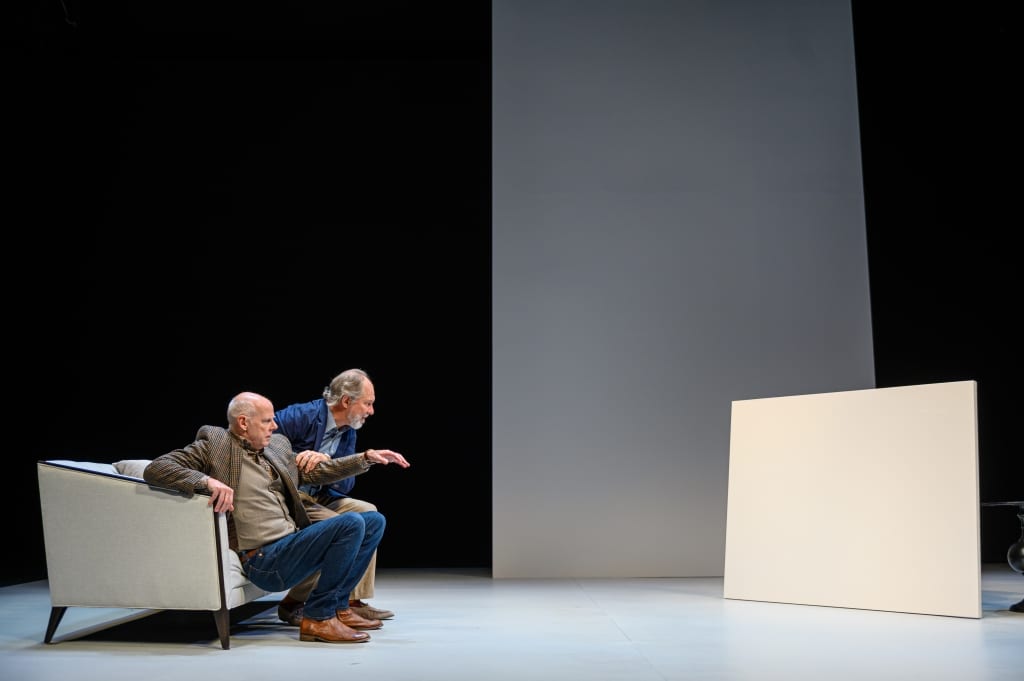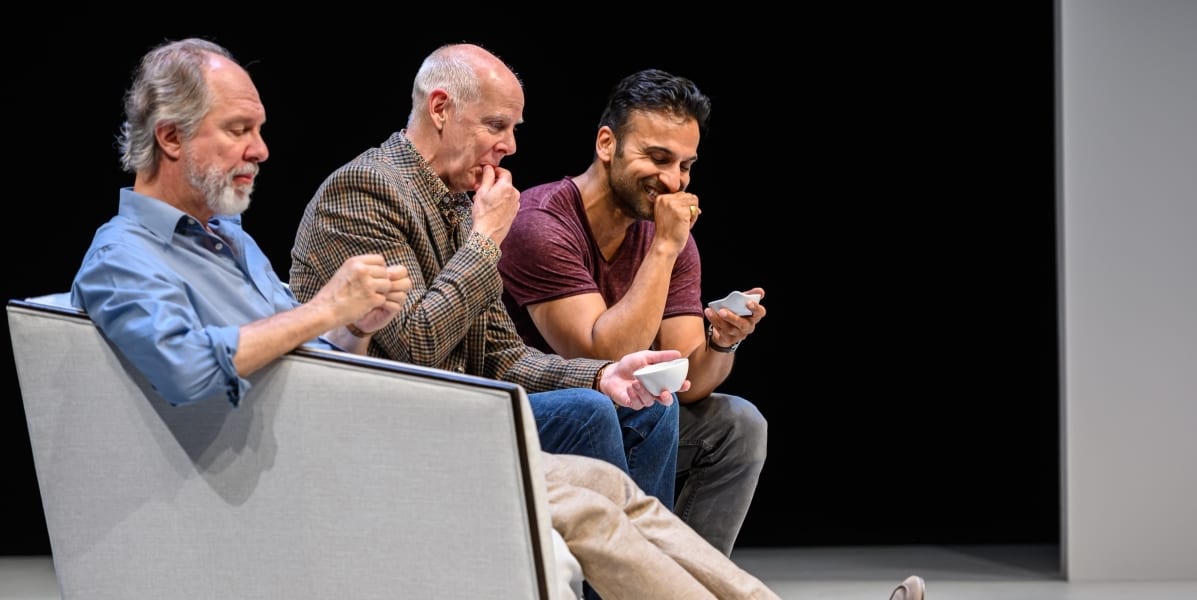Paris, 1994. An extravagant purchase leads three life-long friends to a turbulent examination of their friendship, and modern art. Written 25 years ago, the premise of ‘Art’ still packs a punch, delivering a culturally relevant message surrounding the subjective nature of taste and criticism.
While the play carries a promising concept (attested by successful runs in Paris, London and New York), SoulPepper’s production lacks the dimension and authenticity needed to truly invest the spectator in the relationships explored on stage. The action centers around Serge’s (Maramoros) recent immersion in the contemporary art scene, manifested in his recent purchase of a white-on-white canvas that set him back two hundred thousand francs. His artistically conservative friend Marc (Dennis) is outraged by the acquisition, though his frustration lies with not only the aesthetic nature of the art piece, but also with the attitude and defiance that seemingly led Serge to purchase the thing in the first place. Our third and final character, Yvan (Madhavji), maintains a neutral position, while being consumed by his own familial turmoil. Still, against his will, Yvan is forced to take an active role in the dynamics of Serge and Marc’s dispute, and the resulting escalation dictates the trajectory of the plot.

Gillian Gallow’s set design is effective and slick; its clean minimalism allows the audience to focus solely on the dialogue, with one symbolic piece of art distinguishing each character’s place of residence. Each protagonist is afforded time to break the fourth wall and address the audience directly, but unfortunately the chemistry between the three male characters is not robust enough to evoke empathy or a deeper than level of compassion. At times, their ‘acting’ is inescapable. The Parisian context also jars with this production’s execution, with an unforgivable discrepancy between the intended setting and vocabulary, and the distinct Ontarian nature of the actors.
To summarize, like with the characters in the play, the white painting provokes a multilayered dialogue concerning the role of the spectator in modern art. While bright and illuminatory, the characters lack the dimensionality required to push the narrative further than a succinct discussion. Though compelling and entertaining, ‘Art’ may better suit a smaller, and more independent stage producti

